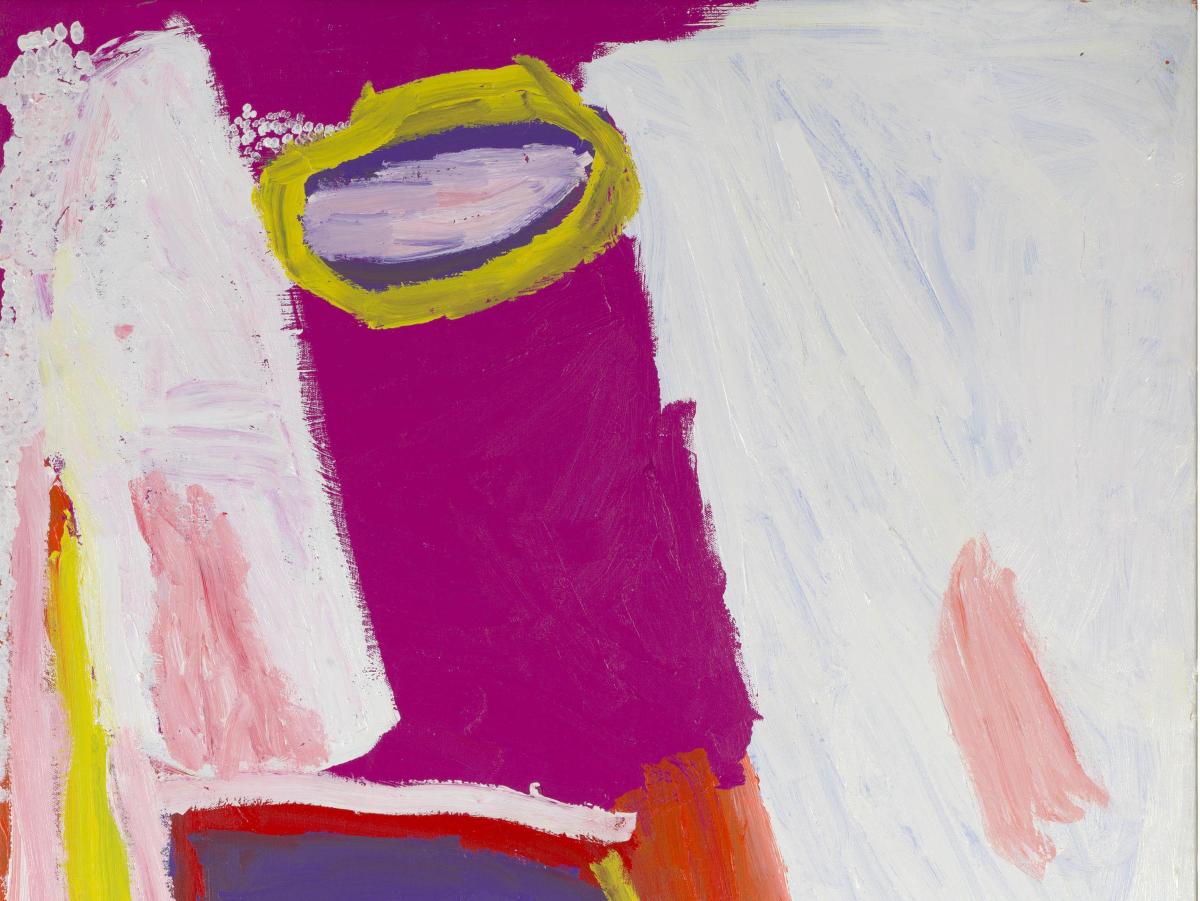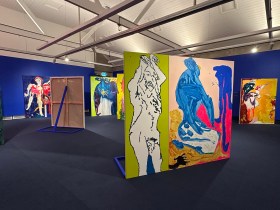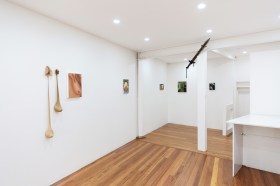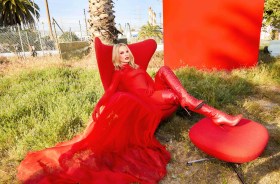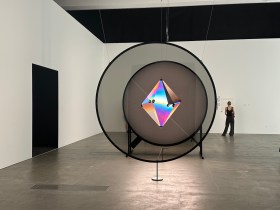Mirdidingkingathi Juwurnda Sally Gabori Kaiadilt c. 1924–2015 Dibirdibi Country – Topway 2006 synthetic polymer paint on linen 151 x 101 cm Purchased 2008. The Queensland Art Gallery Foundation Grant Queensland Art Gallery | Gallery of Modern Art (2008.227) © Mirdidingkingathi Juwarnda/Licensed by Viscopy. (Full image below).
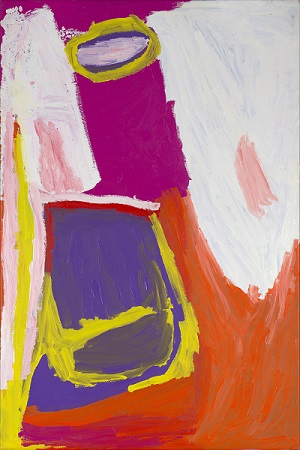
There are occasions when art, through its sheer energy, application and conceptual interpretation has the power to transport its viewer to another time, place or spiritual understanding: the work of the late Mirdidinghingathi Juwarnda Sally Gabori, presently on show in the exhibition Dulka Warngiid – Land of All, at the National Gallery of Victoria (NGV) is a fine example of this.
Patterns of cockle shells lie in the ash of the fire; fish and birds appear then are gone; the soft red of mudstones become part of the visual fabric while the blue of the estuary balances and contains the composition. Two large group compositions (2007 and 2008) in polymer paint, demand the viewers attention as they enter the first of four large, light filled spaces on the third floor of the NGV Australia, setting the tone and energy for the exhibition to come. Created by Sally Gabori and six other Kaiadilt women, they depict aspects of Bentinck Island, remembered and experienced; the land they called their spiritual home.
‘You are not enclosed within your bodies, nor confined to houses or fields. That which is you dwells above the mountain, and roves with the wind…’ writes Kahlil Gibran in The Prophet, and his words capture the ‘spirit’ that underpins Gabori’s works. Introduced to the medium of paint around the age of 80 years old, the exhibition draws off works created in the last ten years of Sally Gabori’s life, telling the stories and depicting the sites of ‘her country’ and its people.
Gabori was born on the small island of Bentinck, one of a dozen in the Wellesly group, in the south east of the Gulf of Carpentaria in 1924. Living a traditional life style on the island until her mid twenties Gabori, along with the rest of the Kaiadilt community, was eventually forced to flee to the neighbouring Mornington island due to catastrophic climatic conditions.
The current exhibition of Gabori’s paintings includes 50 works from public and private collections and was originally developed by the Queensland Art Gallery’s Curator of Indigenous Art Bruce McLean. The show traces Gabori’s evolving style from early and generally smaller works in the front gallery space to larger works in successive rooms. Gabori’s earlier paintings explore the artist’s country at Mirdidingki. Mirdidingki (2010 – 2011) in polymer paint, depicts the creek area of her birth and the tree under which she was born. Gabori interrogates the surface of the canvas in the numerous visions of her father’s Thundi Country; the striking black and white painting Thundi (2011) in polymer paint, evoking the sand bars and flats off Thundi’s coast, her brush markings evoking the ripple patterns and frothing water. The Nyinyilki paintings reference the main outstation on Bentinck Island where Gabori and her family would revisit in later years. Nyiyilki (2010) in polymer paint, is a major work in her oeuvre that depicts the feeding tracks dugongs make on the surface of the water and sandbars. This work was reproduced from Gabori’s major public art work at Brisbane International airport, spanning more than 700 metres. Dibirdibi Country, the birth place and home country of her beloved late husband, Pat, is one of the most documented by the artist. Dibirdibi (2008) in polymer paint, charts the south-eastern coastline of Bentinck Island and like so many of her works is striking in its energy and painterly manner; Gabori works and reworks the image in which under colours loom, ghost-like, through the white of the surface.
Unlike many other indigenous societies the Kaladilt people had no painting tradition so Gabori, previously a master weaver, developed her own powerful iconography. ‘When she painted, she talked to the paintings and she sung to them and she laughed a lot…she was reliving moments and memories. That’s the sort of joy she brought to these paintings, and they’re really full of that energy of life that she had,’ says Bruce McLean.
This is a powerful exhibition of a significant contemporary Australian artist and is accompanied by a handsome catalogue and a variety of interpretive texts for adults and children. But how much more powerful the experience if a greater context for Gabori’s work had been provided to the viewer through multi media or sound support.Highly recommended.

Birmuyingathi Maali Netta Loogatha Kaiadilt born 1942 Mirdidingkingathi Juwurnda Sally Gabori Kaiadilt c. 1924–2015 Warthadangathi Bijarrba Ethel Thomas Kaiadilt born 1946 Thunduyingathi Bijarrb May Moodoonuthi Kaiadilt 1929–2008 Kuruwarriyingathi Bijarrb Paula Paul Kaiadilt born (c. 1937) Wirrngajingathi Bijarrb Dawn Naranatjil Kaiadilt 1935–2009 Rayarriwarrtharrbayingathi Mingungurra Amy Loogatha Kaiadilt born 1942 Dulka Warngiid 2007 synthetic polymer paint on canvas 195.0 x 610.0cm National Gallery of Victoria, Melbourne Purchased with funds donated by Catherine Allen, Carolyn Berger and Delma Valmorbida, 2007 (2007.527) © Birmuyingathi Maali Netta Loogatha/Licensed by Viscopy
Rating: 3.5 stars out of 5
Mirdidingkingathi Juwarnda Sally Gabori: Dulka Warngiid – Land of All
The Ian Potter Centre: NGV Australia
Mirdidingkingathi Juwarnda Sally Gabori: Dulka Warngiid – Land of All is a Queensland Art Gallery | Gallery of Modern Art Touring Exhibition, on display at The Ian Potter Centre: NGV Australia from 23 September 2016 – 29 January 2017.

